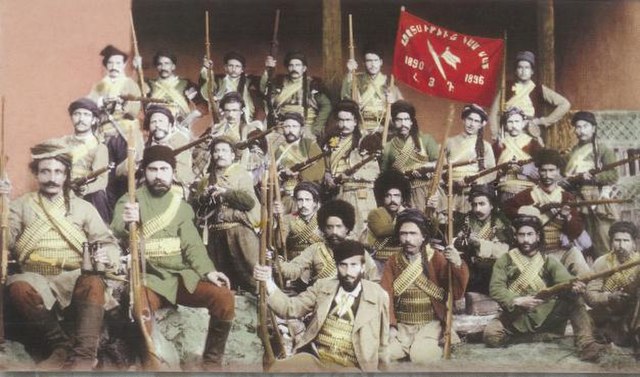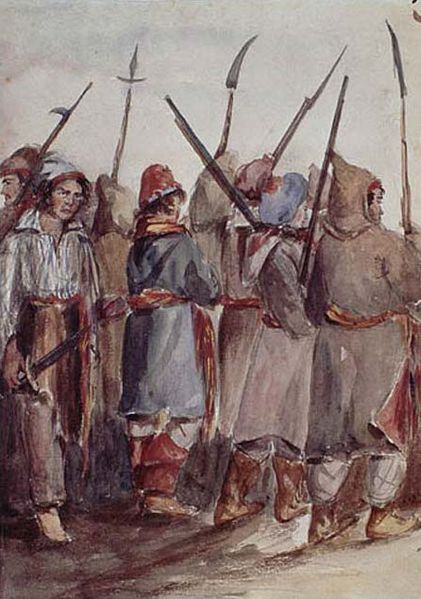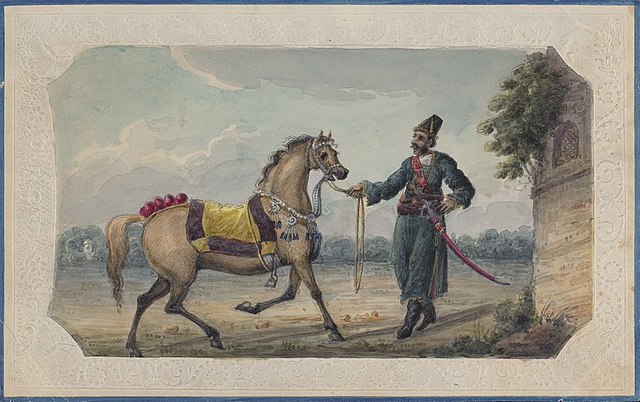Fedayi, also known as the Armenian irregular units or Armenian militia, were Armenian civilians who voluntarily left their families to form self-defense units and irregular armed bands in reaction to the mass murder of Armenians and the pillage of Armenian villages by criminals, Turkish and Kurdish gangs, Ottoman forces, and Hamidian guards during the reign of Ottoman Sultan Abdul Hamid II in late 19th and early 20th centuries, known as the Hamidian massacres. Their ultimate goal was always to gain Armenian autonomy (Armenakans) or independence depending on their ideology and the degree of oppression visited on Armenians.
A fedayi group fighting under the ARF banner. The banner reads Liberty or Death.
Yeprem Khan was a revolutionary leader of Iran and a key figure of the revolution
A photo of an Armenian volunteer from the Library of Congress
Arabo
Irregular military is any non-standard military component that is distinct from a country's national armed forces. Being defined by exclusion, there is significant variance in what comes under the term. It can refer to the type of military organization, or to the type of tactics used. An irregular military organization is one which is not part of the regular army organization. Without standard military unit organization, various more general names are often used; such organizations may be called a troop, group, unit, column, band, or force. Irregulars are soldiers or warriors that are members of these organizations, or are members of special military units that employ irregular military tactics. This also applies to irregular infantry and irregular cavalry units.
Irregular soldiers in Beauharnois, Quebec, Lower Canada, 19th century.
A group of bashi-bazouks, Ottoman postcard
Gardner's Irregular Horse of Hindustani Mahomedans
Boer Militia








